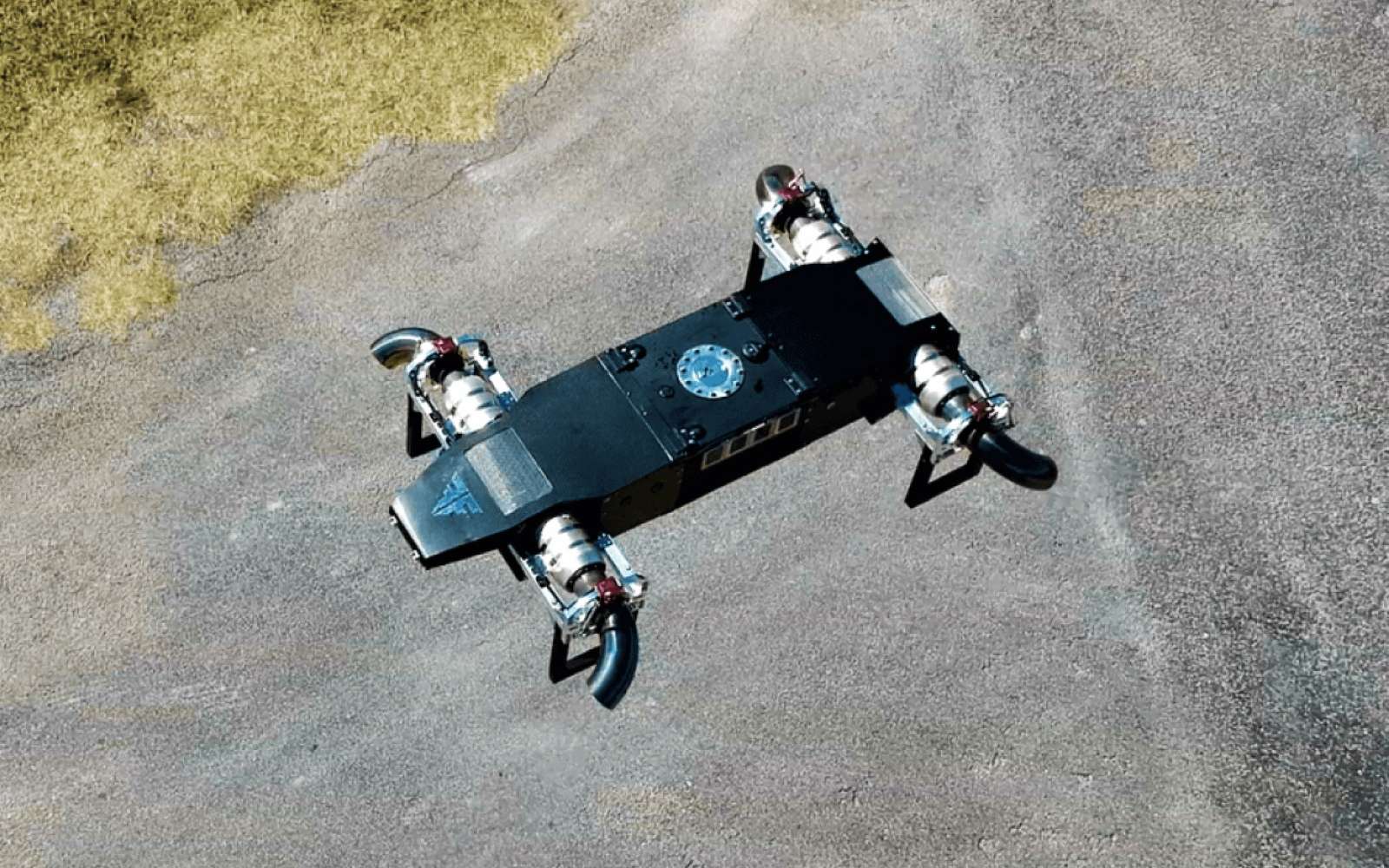To reach a speed of more than 400 km / h with a drone, a Texan company replaced the rotors by four micro-reactors powered by Diesel. The aircraft can cruise for 15 minutes.
For a quadrotor drone , moving at speeds exceeding 150 km / h is reserved for some models. In this regard , the RacerX could stealthily reach a record peak of 289 km / h during a very short flight. Going beyond is almost impossible, especially as autonomy is ridiculously reduced. Because, like any helicopter , the speed of rotor drones is limited by a well-known phenomenon of rotary wings .
The blade that rotates forward will combine its speed with that of the aircraft . For the blade which is at the back, it is the opposite. And the faster the device goes, the less thelift is maintained on the sails, and the less it can fly It is for this reason that these sails rarely exceed 300 km / h. It is possible to improve the lift with counter-rotating propellers, but it remains too energy-consuming for a drone.
The solution ? Replace the rotors with four reaction microturbines powered by Diesel. This is the type of drone that the company FusionFlight has developed. Based in Dallas, Texas (United States), it has designed and experimented with a concept of a supercharged drone with the JetQuad AB5.
It has two records: that of the smallest and fastest jet drone in the world with a top speed of 402 km / h. As another record, the AB5 can evolve in theory beyond 9,144 meters in height. It is not, however, a microdrone. The device measures 120 centimeters in length and width by 60 centimeters in height.

Nearly 500 km / h for the production model
In terms of consumption, the drone is greedy. A 19 liter tank allows it to hover 30 minutes or 15 minutes while cruising.
But the advantage of the JetQuad AB5 is that, unlike an electric drone of this weight/dimension, the aircraft can carry a maximum payload of 18 kilograms. A feat, knowing that the drone itself weighs 23 kg and that it is necessary to add about 18 kg of fuel.
For the moment the device only exists as a prototype, but it could well be marketed in a little over a year. The standard version of the drone should reach a maximum speed of 483 km / h. The company plans to make it fly even faster, using post-combustion systems. Its price will obviously not make it a recreational drone, since it will be sold between 200,000 and 250,000 dollars.